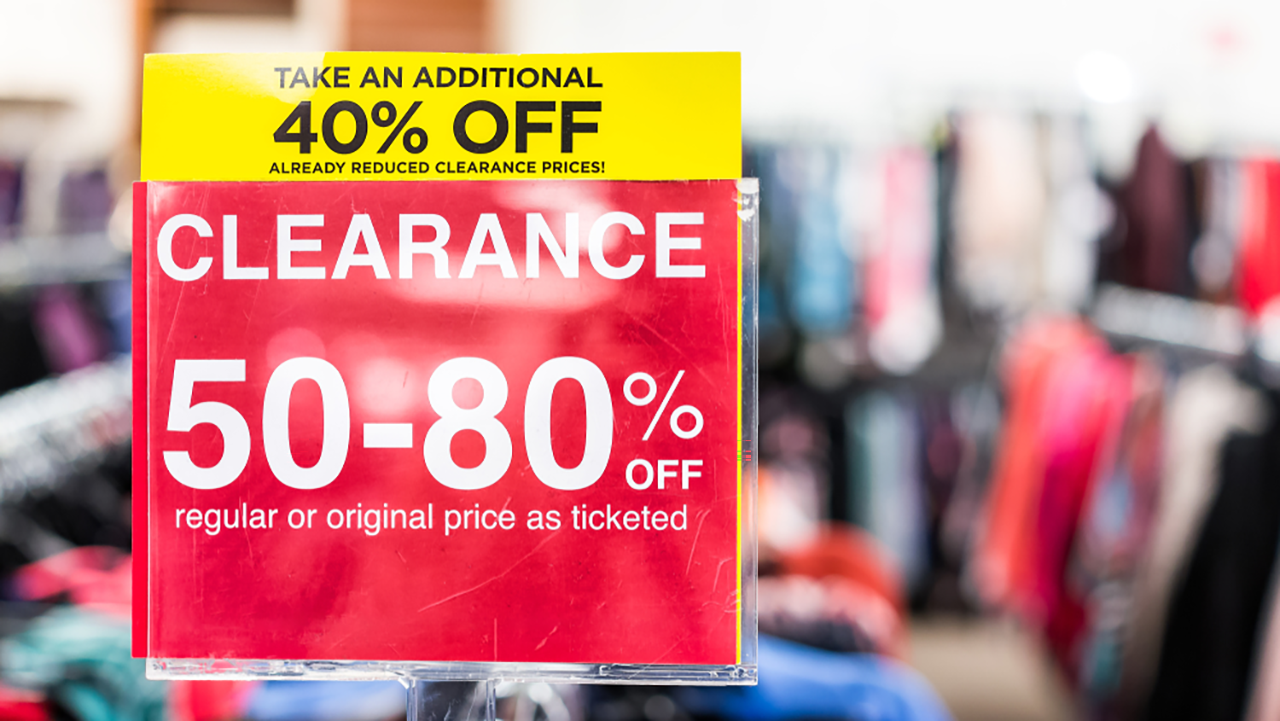Transform retail operations with Zebra’s retail technology solutions, featuring hardware and software for improving inventory management and empowering teams.
Streamline operations with Zebra’s healthcare technology solutions, featuring hardware and software to improve staff collaboration and optimise workflows.
Enhance processes with Zebra’s manufacturing technology solutions, featuring hardware and software for automation, data analysis, and factory connectivity.
Zebra’s transportation and logistics technology solutions feature hardware and software for enhancing route planning, visibility, and automating processes.
Zebra's hospitality technology solutions equip your hotel and restaurant staff to deliver superior customer and guest service through inventory tracking and more.
Zebra's market-leading solutions and products improve customer satisfaction with a lower cost per interaction by keeping service representatives connected with colleagues, customers, management and the tools they use to satisfy customers across the supply chain.
Empower your field workers with purpose-driven mobile technology solutions to help them capture and share critical data in any environment.
Zebra's range of mobile computers equip your workforce with the devices they need from handhelds and tablets to wearables and vehicle-mounted computers.
Zebra's desktop, mobile, industrial, and portable printers for barcode labels, receipts, RFID tags and cards give you smarter ways to track and manage assets.
Zebra's 1D and 2D corded and cordless barcode scanners anticipate any scanning challenge in a variety of environments, whether retail, healthcare, T&L or manufacturing.
Zebra's extensive range of RAIN RFID readers, antennas, and printers give you consistent and accurate tracking.
Choose Zebra's reliable barcode, RFID and card supplies carefully selected to ensure high performance, print quality, durability and readability.
Zebra's rugged tablets and 2-in-1 laptops are thin and lightweight, yet rugged to work wherever you do on familiar and easy-to-use Windows or Android OS.
With Zebra's family of fixed industrial scanners and machine vision technologies, you can tailor your solutions to your environment and applications.
Zebra’s line of kiosks can meet any self-service or digital signage need, from checking prices and stock on an in-aisle store kiosk to fully-featured kiosks that can be deployed on the wall, counter, desktop or floor in a retail store, hotel, airport check-in gate, physician’s office, local government office and more.
Discover Zebra’s range of accessories from chargers, communication cables to cases to help you customise your mobile device for optimal efficiency.
Zebra's environmental sensors monitor temperature-sensitive products, offering data insights on environmental conditions across industry applications.
Zebra's location technologies provide real-time tracking for your organisation to better manage and optimise your critical assets and create more efficient workflows.
Enhance frontline operations with Zebra’s AI software solutions, which optimize workflows, streamline processes, and simplify tasks for improved business outcomes.
Empower your frontline with Zebra Companion AI, offering instant, tailored insights and support to streamline operations and enhance productivity.
The everything you need to rapidly and cost effectively develop high-performance AI vision applications on Zebra mobile computers.
Zebra Workcloud, enterprise software solutions boost efficiency, cut costs, improve inventory management, simplify communication and optimize resources.
Keep labour costs low, your talent happy and your organisation compliant. Create an agile operation that can navigate unexpected schedule changes and customer demand to drive sales, satisfy customers and improve your bottom line.
Drive successful enterprise collaboration with prioritized task notifications and improved communication capabilities for easier team collaboration.
Get full visibility of your inventory and automatically pinpoint leaks across all channels.
Reduce uncertainty when you anticipate market volatility. Predict, plan and stay agile to align inventory with shifting demand.
Drive down costs while driving up employee, security, and network performance with software designed to enhance Zebra's wireless infrastructure and mobile solutions.
Explore Zebra’s printer software to integrate, manage and monitor printers easily, maximising IT resources and minimising down time.
Make the most of every stage of your scanning journey from deployment to optimisation. Zebra's barcode scanner software lets you keep devices current and adapt them to your business needs for a stronger ROI across the full lifecycle.
RFID development, demonstration and production software and utilities help you build and manage your RFID deployments more efficiently.
RFID development, demonstration and production software and utilities help you build and manage your RFID deployments more efficiently.
Zebra DNA is the industry’s broadest suite of enterprise software that delivers an ideal experience for all during the entire lifetime of every Zebra device.
Advance your digital transformation and execute your strategic plans with the help of the right location and tracking technology.
The Zebra Aurora suite of machine vision software enables users to solve their track-and-trace, vision inspection and industrial automation needs.
Zebra Aurora Focus brings a new level of simplicity to controlling enterprise-wide manufacturing and logistics automation solutions. With this powerful interface, it’s easy to set up, deploy and run Zebra’s Fixed Industrial Scanners and Machine Vision Smart Cameras, eliminating the need for different tools and reducing training and deployment time.
Aurora Imaging Library™, formerly Matrox Imaging Library, machine-vision software development kit (SDK) has a deep collection of tools for image capture, processing, analysis, annotation, display, and archiving. Code-level customisation starts here.
Aurora Design Assistant™, formerly Matrox Design Assistant, integrated development environment (IDE) is a flowchart-based platform for building machine vision applications, with templates to speed up development and bring solutions online quicker.
Designed for experienced programmers proficient in vision applications, Aurora Vision Library provides the same sophisticated functionality as our Aurora Vision Studio software but presented in programming language.
Aurora Vision Studio, an image processing software for machine & computer vision engineers, allows quick creation, integration & monitoring of powerful OEM vision applications.
Adding innovative tech is critical to your success, but it can be complex and disruptive. Professional Services help you accelerate adoption, and maximise productivity without affecting your workflows, business processes and finances.
Zebra's Managed Service delivers worry-free device management to ensure ultimate uptime for your Zebra Mobile Computers and Printers via dedicated experts.
Find ways you can contact Zebra Technologies’ Support, including Email and Chat, ask a technical question or initiate a Repair Request.
Zebra's Circular Economy Program helps you manage today’s challenges and plan for tomorrow with smart solutions that are good for your budget and the environment.

Retail’s Big Dilemma: Excess Inventory
Retailers are already facing their next inventory crisis—too much stock on hand, with too few buyers.
Not even a full year ago, bare spots on store shelves were blamed on extended nagging supply chain bottlenecks, as news footage revealed virtual flotillas of fully laden container ships anchored off our coasts—idled simply by a lack of people and other resources to unload them onshore.
But as ports gradually return to normal, the rest of our economy is still navigating uncharted, choppy waters. While cautious consumers cope with runaway inflation (as we’ve discussed) and many retailers still struggle with nagging inventory shortages, others are now rapidly experiencing the opposite – amassing gluts of various merchandise they can’t move, from seasonal apparel to big-ticket home goods.
What happened?
Consumer spending is rapidly shifting away from goods toward services and experiences, including dining out, entertainment, and travel, as buyers start to resume “life after lockdown.”
Retailers who grabbed as much inventory as possible months ago – when production and fulfillment were “spotty” at best – couldn’t anticipate how quickly last year’s trends would change. What had been strong demand for athletic/comfort wear worn around the house has realigned toward office/social apparel and cosmetics for venturing back into public.
Inconsistent global shipping has led to retailers receiving orders of merchandise outside of their normal sales cycles – seasonal goods arriving too late or too early – clogging their distribution centers and hiking carrying costs.

These latest economic curveballs are leaving retailers with one viable option: deep markdowns to clear their warehouses – or what Macy’s CFO Adrian Mitchell termed “an elevated promotional environment.” While rock-bottom discounts may be attractive to consumers, particularly following a costly fill-up at the corner gas pump, margins and profits across the retail sector are set to take a wallop. For example:
On a June 6, 2022 Q1 earnings call, Target warned investors that an aggressive discount strategy—coupled with cancelling new orders from suppliers— will result in a lowered EBITDA forecast from 5.3% to 2%, triggering a sharp decline in its stock price, which arguably rippled across Wall Street.
Days earlier, Walmart conceded that fully resolving its Q1 backup of inventory – a 32% spike – would likely take “another couple quarters,” following up on the previous month’s similarly disappointing earnings report, which abruptly plunged its share price to a 35-year low.
These somber projections from the big-box giants have been a bellwether across the retail sector—particularly among specialty apparel retailers like Gap, Abercrombie & Fitch, and American Eagle Outfitters, who’ve likewise reported revenue challenges stemming from over-inventory. Across the board, syncing quantity, demand and margins has become harder than ever.
The problem, simply put, is wrong merchandise piling up at the wrong places at the wrong time, and what customers were expected to have wanted a few months ago isn’t what they’re actually buying today. How can retailers compensate—and de-risk their inventory management?
The knee-jerk response is to broadly markdown categories of goods that aren’t moving. But such broad-brush discounting is a “blunt instrument” that rarely finds the ideal “sweet spot” between fastest sell-through and optimized margin—as illustrated in my previous blog post.
The ideal solutions leverage granular-level data:
Which SKUs are and aren’t selling—and where?
How quickly can we assess shifting customer demand?
What lower price points will move lingering merchandise now—without squandering critical margin?
Can we fine-tune markdown/sell-through for specific items that won’t require a rock-bottom discount?
What else can we learn to avoid excess inventory all but pre-destined for the clearance rack?
Wrangling all that essential data “from scratch” – even in the best of times – would be a colossal effort. Retailers of all sizes are looking to gain a competitive edge from single-source, AI-powered applications for demand planning and forecasting and lifecycle pricing to prevent or quickly resolve costly over-inventory – before they’re staring at 200 immobile pallets of shorts and bathing suits in November.
###
Related Read:

David Barach
David Barach is currently a Senior Director for Retail Software Solution Strategy supporting the overall product content, positioning and adoption for antuit.ai’s suite of merchandising solutions for retailers. antuit.ai was recently acquired by Zebra Technologies.
Previously, he has worked for 20 years in the retail solutions space in Pricing, Planning and Inventory Optimization solutions for 84.51 (Kroger Co,), SAS Institute, DemandTec (now IBM), ProfitLogic (now Oracle) and Spotlight Solutions. Prior to the solution space, he worked for 15 years in store, planning and pricing roles for Target Corp, Mercantile Stores and Macy’s Department Stores. He has an MBA from Memphis State University and BA from Vanderbilt University.
Zebra Developer Blog
Zebra Developer BlogZebra Developer Blog
Are you a Zebra Developer? Find more technical discussions on our Developer Portal blog.
Zebra Story Hub
Zebra Story HubZebra Story Hub
Looking for more expert insights? Visit the Zebra Story Hub for more interviews, news, and industry trend analysis.
Search the Blog
Search the BlogSearch the Blog
Use the below link to search all of our blog posts.
Most Recent
Legal Terms of Use Privacy Policy Supply Chain Transparency
ZEBRA and the stylized Zebra head are trademarks of Zebra Technologies Corp., registered in many jurisdictions worldwide. All other trademarks are the property of their respective owners. ©2025 Zebra Technologies Corp. and/or its affiliates.




